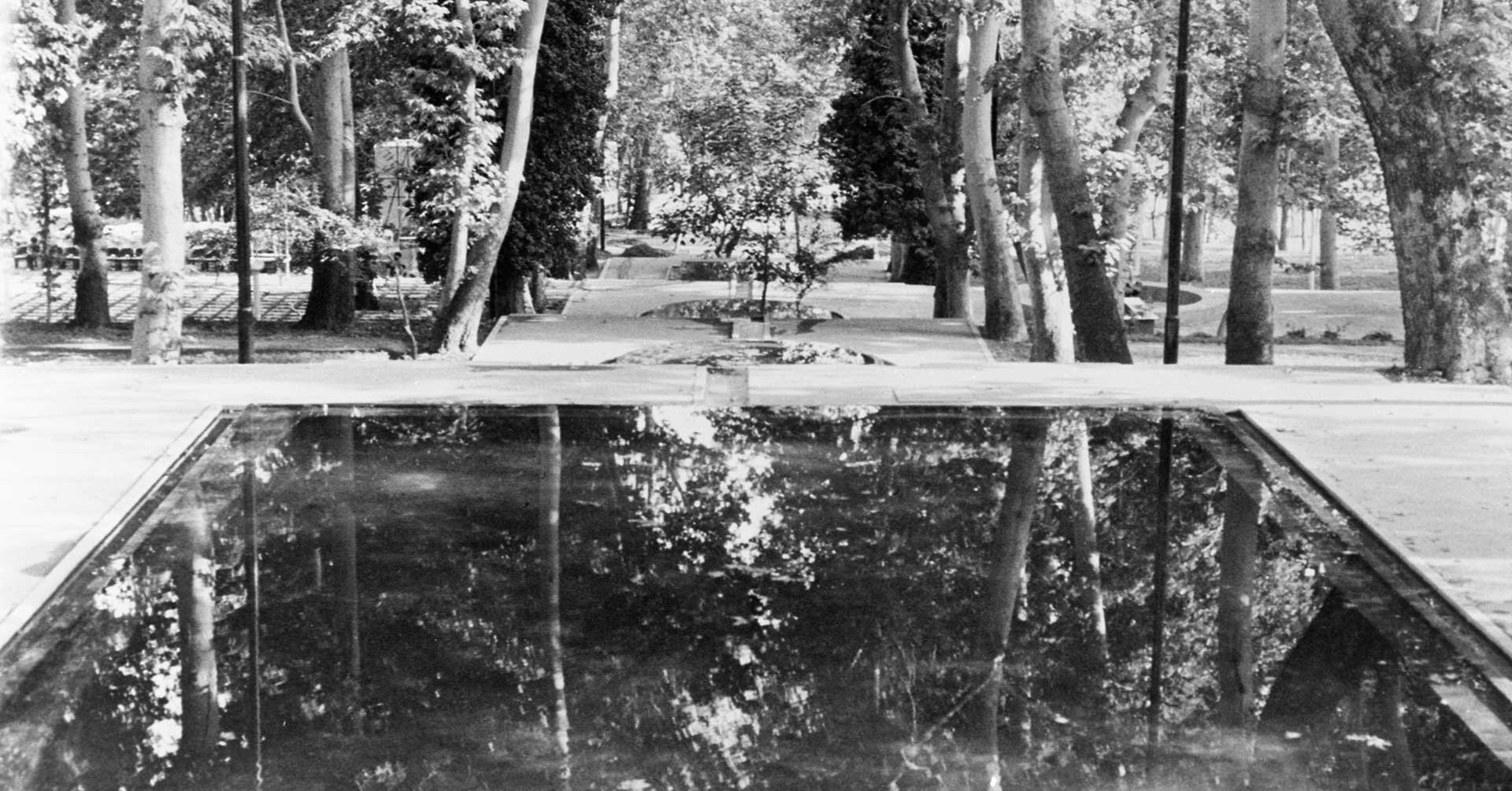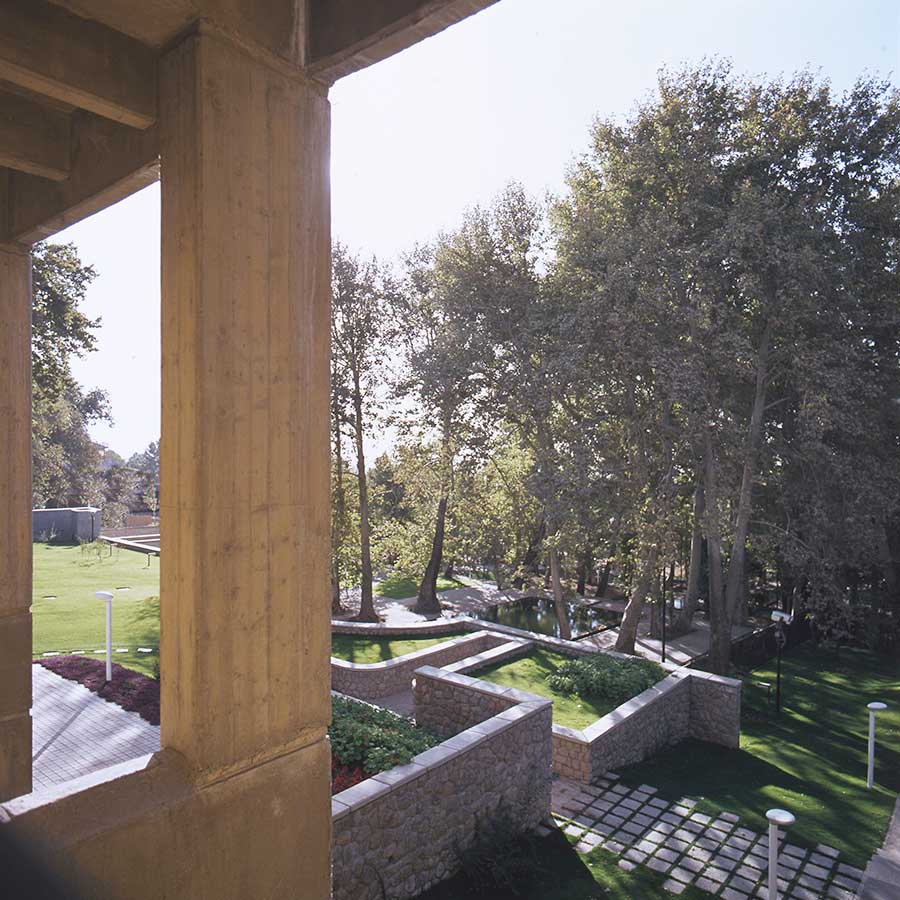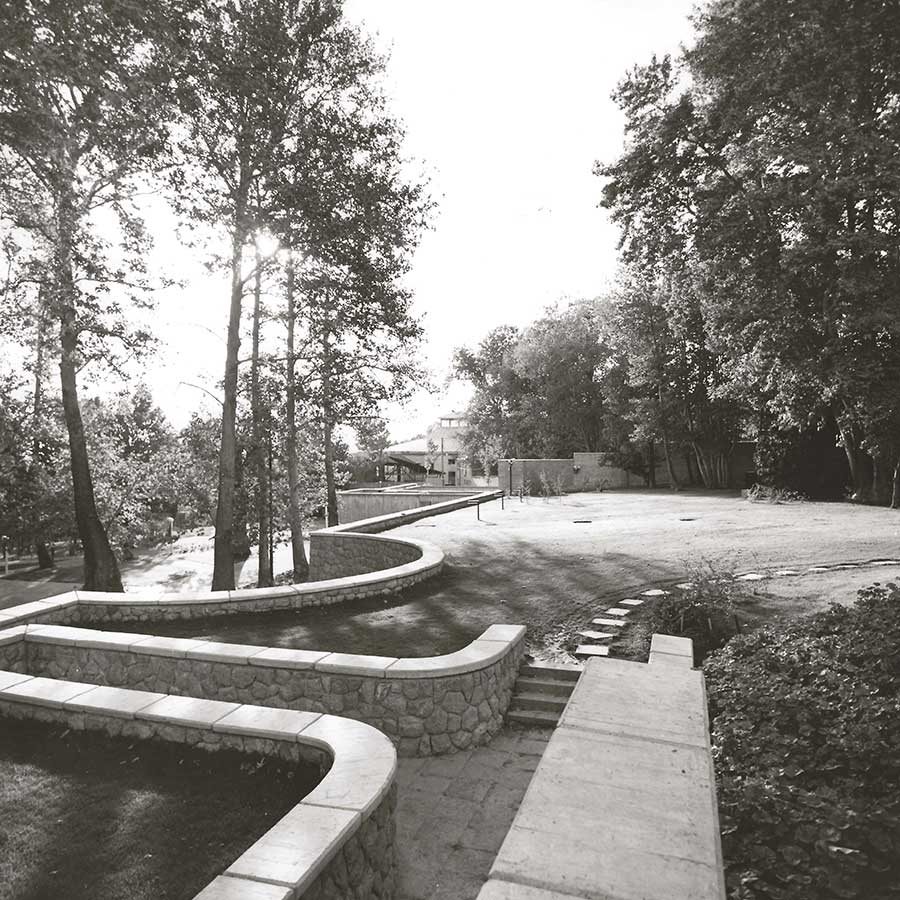
Garden of Niavaran
LOCATION
Iran Shemran Tehran
Year
1970-1978
A few decades ago, residents of Tehran took the long road, shaded by plane trees, to the foothills of the Alborz Mountains. The peaks of the Alborz range contained many small rivers and streams which fertilized the land and provided a livelihood tor the inhabitants of villages hidden in the undulating landscape of the foothills, which often peak to impressive height and grandeur. Many well-to-do urbanites made gardens here for holidays and summer retreats.
A popular, indigenous method of irrigation, ‘ghanat’, provided the life source for many gardens in Iran.
‘Ghanat’ carried water from its mountain bed through a series of interconnected wells, creating an underground stream, and took water to far-off places.
After the departure of the former user, a sanatorium, the Garden of Niavaran was abandoned for some years.
Eventually, it was purchased by Empress Farah, who tried to preserve it and put it to a new use, as many of the old walled Persian gardens were fast disappearing. The expansion of cities and increased land value quite threatened the life of these gardens.
We tiled the ghanat opening in blue, emphasizing the life source of the garden. The ghanat provided water for the impressive series of reflecting pools cascading down toward the site of the Cultural Center, through a tunnel created by tall old plane trees penetrated by rays of light.
The program called for office facilities for Empress Farah’s Secretariat, which at the time looked after twenty-two charities, scientific, educational and cultural institutes and organizations. Atter reviewing the pro-gram, etc., we suggested allocating some of the facilities, namely, the small auditorium, gallery, employees’ restaurant and library into a separate entity and making them available for public use.
Empress Farah liked the idea so much that the whole complex was eventually donated as a cultural center and public park, totally separate and independent of her Secretariat. As a result, a new building emerged from the program on the same site. The splitting of the program was a relief as we tried to avoid the concentration of a big mass which would mean cutting down trees. We also tried to locate the construction on the sites of demolished buildings and in treeless areas.

